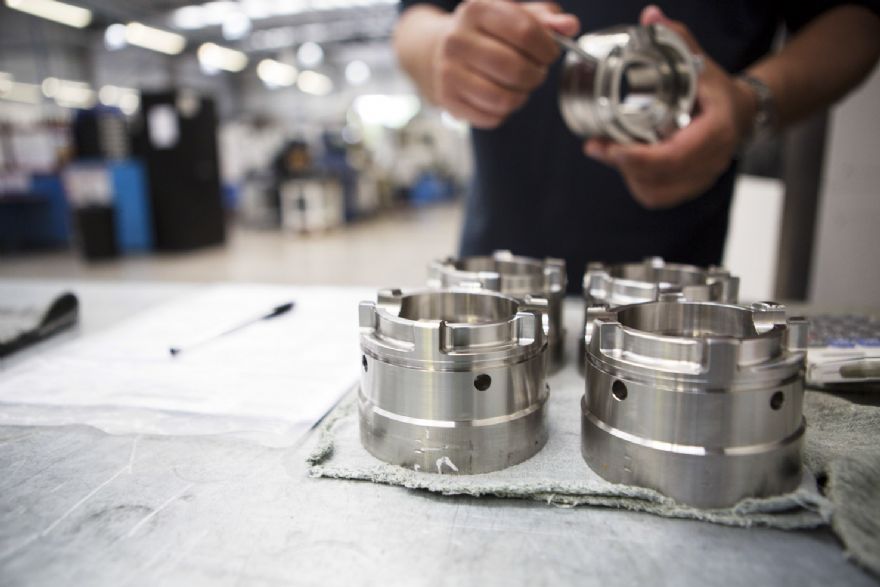
The UK manufacturing sector showed tentative signs of recovery in March, as output and new orders increased following year-long downturns. There were also other signs of stabilisation from the latest survey data, with rates of contraction in employment and purchasing activity slowing
sharply and business optimism about the year-ahead outlook hitting an 11-month high.
The seasonally-adjusted
S&P Global UK Manufacturing Purchasing Managers’ Index (PMI) rose to a 20-month high of 50.3 in March, up from 47.5 in February and above the earlier flash estimate of 49.9. This was the first time the PMI has posted above the neutral 50.0 mark since July 2022. Three of the PMI sub-components (new orders, output and suppliers’ delivery times) were consistent with an improvement in overall operating conditions during March.
Although the sub-indices tracking employment and stocks of purchases both signalled ongoing downturns, rates of contraction eased sharply since February. Manufacturing production increased for the first time since February 2023, as output growth in the consumer goods sector more than offset downturns in the intermediate and investment goods categories. Where an expansion of production volumes was registered, this was linked to client restocking supporting a rise in new order intakes.
March data signalled that the mild uptick in new business inflows was centred on the domestic market. The trend in new export orders remained weak in comparison, with overseas demand falling for the 26th successive month (albeit at the slowest pace since April 2023). Companies reported reduced demand from mainland Europe, with specific reference to France, the Netherlands, Belgium and Poland.
The end of the opening quarter saw business optimism rise to its highest level since April 2023, with 58% of manufacturers expecting their level of production to increase over the coming 12 months. This compared favourably to only 7% anticipating a contraction. Improved sentiment reflected signs of stronger demand, new product launches, a better trading environment, export opportunities and hopes the cost and supply situations would move closer to normal conditions.
The tentative signs of growth and renewed optimism among manufacturers in March filtered through to other variables. Although levels of employment and purchasing activity continued to decline, rates of contraction eased noticeably. The pace of job loss was the slowest since last May, while input buying volumes fell to the weakest extent during the current 21-month sequence of decline. Lower levels of purchasing along with delays in receiving goods ordered from suppliers, efforts to reduce safety stocks and cash flow management initiatives led to a further drop in stocks of purchases during March. Companies linked longer vendor lead times to the Red Sea crisis, as diversions of freight (especially from Asia) and the knock-on effect to downstream supply chains led to extended delivery times.
Holdings of finished products also declined in March. Lower inventories reflected cost-control programmes, lower safety stock requirements and settling existing contracts from stock. Backlogs of work subsequently fell for the twenty-third month in a row. Manufacturers saw upward pressure on both input costs and output charges during March. Although only moderate, the rate of purchase price inflation was the fastest for a year. Companies acted to protect margins by raising selling prices for the fifth successive month.
Rob Dobson, director at S&P Global Market Intelligence, said: “The end of the first quarter saw UK manufacturing recover from its recent doldrums. Production and new orders returned to growth, albeit only hesitantly, following year-long downturns, with the main thrust of the expansion coming from stronger domestic demand. The upturn in demand also led to improved confidence among manufacturers, with positive sentiment hitting an 11-month high. Some 58% of companies expect their output to rise over the coming year.
"We are also seeing signs of stabilisations in employment and purchasing activity alongside a move towards lowering safety stocks, all signs that manufacturers are tentatively optimistic about the road ahead. Potential blockers remain such as continued weak export performance and supply chain stresses, with the neighbouring EU market the main drag on overseas demand and the Red Sea crisis still impacting supply chains. Signs from the survey that the impact of both of these factors is
easing is therefore welcome news.”
Chris Barlow, head of manufacturing at MHA, said: “The uptick in today’s Manufacturing PMI data to above 50 is positive news for the sector and shows that there are some tentative signs of recovery. However, the sector is still lacking confidence and the Budget fell short of providing the clarity and certainty needed for sustained growth.
“The measures announced ahead of and during the Budget were essentially great soundbites but will have very little impact for the vast majority of businesses. On a positive note, Rishi Sunak's subsequent announcement on 18th March on Apprenticeship Levy Reforms does inject some optimism into the sector, particularly for SMEs and young people entering the workforce.
“As industry leaders and policymakers navigate the road ahead, a concerted effort to address pressing challenges and implement a comprehensive industrial strategy is paramount. The building blocks of an industrial strategy are starting to emerge – it just needs the leadership and ambition to bring it all together in a cohesive plan.”